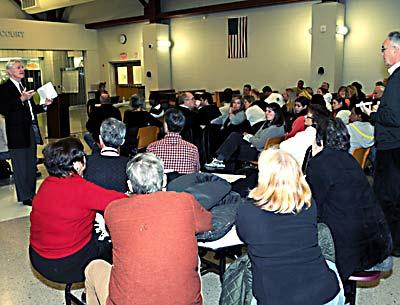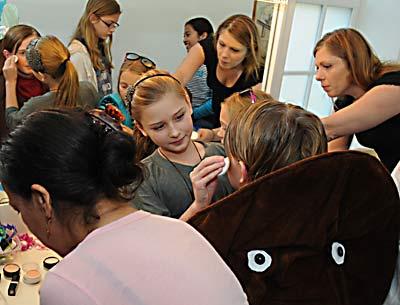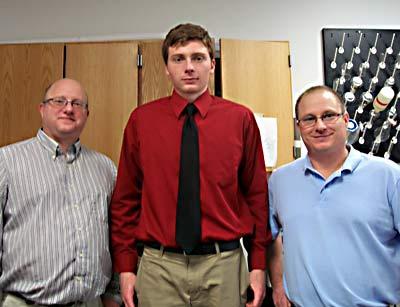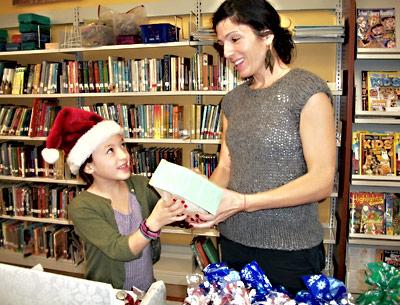Let the East Hampton Supe Search Begin
Let the East Hampton Supe Search Begin

Many who gathered at a community forum at East Hampton High School on Tuesday night to paint a picture of the ideal district superintendent were there to say their piece about the interim superintendent, Richard Burns, who has garnered high marks from parents and staff. But Raymond Fell, who has conducted many head of school searches for districts up and down Long Island, wanted direct answers to his questions and gently kept speakers on topic.
Once people understood that there was to be no grandstanding, they settled in to the job at hand — developing a punch list that would serve as an outline for the perfect candidate.
The crowd was so large that the forum was moved from the district office to the new cafeteria space. Mr. Fell, a superintendent search consultant with the Eastern Suffolk Board of Cooperative Education Services, walked the group through a series of questions about the professional and personal qualities they desire in a superintendent.
Some suggested that he or she have a background in early childhood education. One speaker pointed out that the East Hampton Day Care Learning Center, which provides prekindergarten to the district, does not offer many of the services available in other buildings in the district, most notably a school nurse. Art McCann, who has been an East Hampton taxpayer for 35 years and worked for school districts in Westchester County, said that “it can take a superintendent a long time to get to know the community.” Mr. Fell and his assistant, Terri Sweeney, spun that into “a knowledge of the culture, history, and community of East Hampton.”
Someone else talked about the importance of having a good rapport with staff, and said the district needs a good communicator who could keep lines open with faculty, parents, and community.
Daniel Hartnett, who until recently was the district’s bilingual social worker and has just taken on the job of being the assistant principal at the John M. Marshall Elementary School, said it is crucial “to have an advocate for children and for families in the community. Almost all programs have recently been defunded.” A new superintendent would need to develop creative partnerships with local politicians, he said.
A technology background was also high on some speakers’ lists. And one person called for a candidate who is “student and people-centered, not building-centered.” Also on the punch list: a superintendent who is creative during difficult times and has experience with budget cuts.
“And someone with a passion for the learning process, for life, for the community, for the school,” another man suggested. A champion for progressive education with a multicultural philosophy was also added to the drawing board.
The board will advertise for the position in The New York Times, most likely the Jan. 22 Sunday edition, along with two ads that will go into “Education Week,” a trade publication, and on monster.com.
The third Friday in February is the last day that the board will accept résumés, after which the interview process will begin.
When asked if Mr. Burns had applied, Mr. Fell said, “No one has applied yet.”



